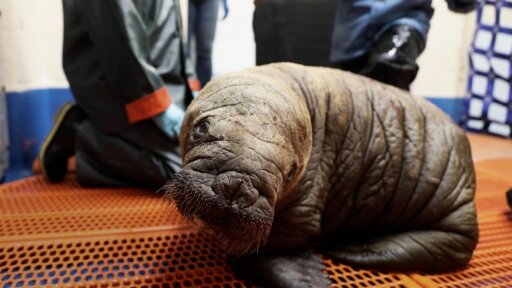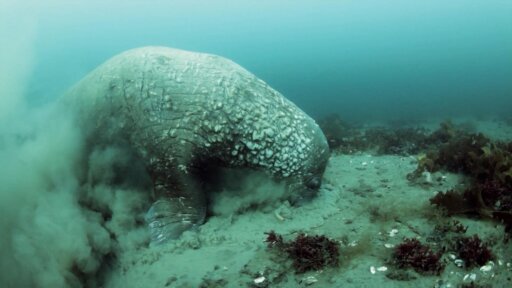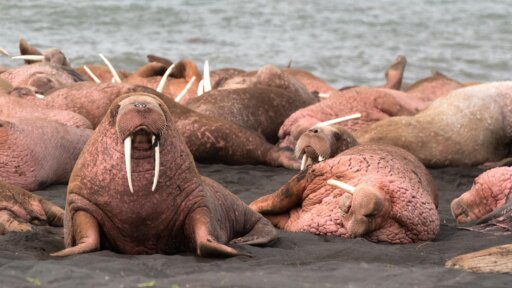The Arctic “death spiral” refers to the rapid loss of sea ice caused by climate change. For walruses, this means losing the ice platforms they rely on to rest, raise their young, and hunt. Discover how melting sea ice is reshaping their future.
Features



- The lifecycle of sea ice is also driven by the sun.
The cool thing about ice in the Arctic is that it takes a while to form, but it can go away very rapidly.
The freeze up is a gradual thing, and the thaw can be very abrupt.
As the sea ice melts, it leaves behind a growing expanse of dark water that absorbs more energy from the sun.
The warmer water melts the remaining ice even faster.
And as Arctic summers become warmer, more and more sea ice is disappearing.
It's been called the Arctic Death Spiral.
It is kind of personal for me because when I came up here in 1982, there was a lot of sea ice, and now 42 years later, we've lost a third of the summer sea ice.
So just in my own personal memory of the Arctic, we've lost about a million square miles of summer ice, and you have to imagine that that's gonna have some impact on the walrus.
When I was doing my research back in the '80s, I was using side scan sonar to locate walrus feeding grounds.
These are on the shallow continental shelf that bridges Russia and Alaska.
Here, the rich sea floor contains vast clam beds.
A marine version of the Great Plains grasslands.
Walrus mothers and calves depend on the moving sea ice to carry them over this rich source of food.
But now, as the sea ice melts farther north, if they stay on their platforms, they'll be carried beyond the continental shelf into deep water and deep trouble.
The walrus is not gonna dive 8,000 feet down to eat clams.
It's used to diving down 200 feet deep clams.
So once the ice is off the edge of the continental shelf, it's not a useful tool for the walrus.
To survive, they must abandon their ice flows and head for land.
And they do so in extraordinary numbers.
You May Also Like






